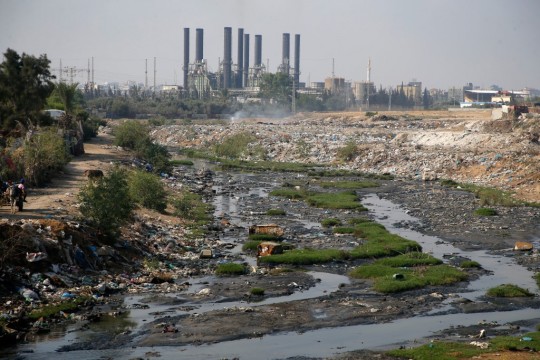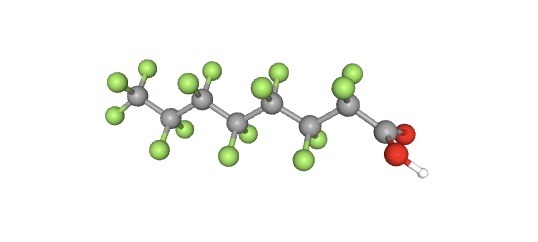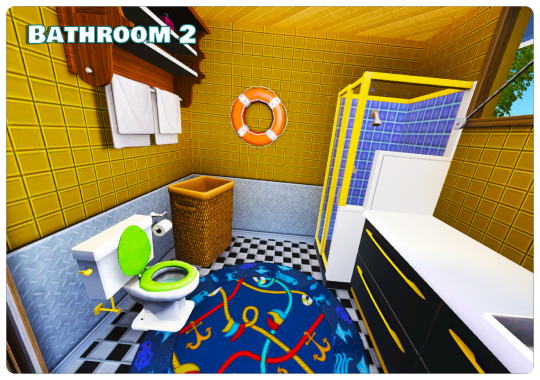#Solar panels for Industrial Buildings
Explore tagged Tumblr posts
Text
The Benefits of Solar Panel Installation for Industrial Facilities
In the modern industrial landscape, sustainability and cost-efficiency are paramount. As companies seek to reduce their environmental footprint and operational costs, industrial solar panel installation emerges as a powerful solution. By harnessing the sun's energy, industrial facilities can significantly cut down on energy expenses while contributing to a greener future. This blog will explore the key benefits of installing solar panels in industrial buildings and why companies like Novasys Greenergy are at the forefront of this revolution.
1. Cost Savings on Energy Bills
One of the most compelling reasons for industrial solar panel installation is the substantial reduction in energy costs. Industrial facilities are known for their high energy consumption, with machinery, lighting, heating, and cooling systems all drawing significant power. Solar panels allow these facilities to generate their own electricity, which can offset or even eliminate their reliance on the grid. Over time, this can lead to massive savings on energy bills, freeing up resources for other critical business needs.
2. Energy Independence and Security
In today's world, energy security is more important than ever. Relying solely on traditional energy sources leaves industrial facilities vulnerable to price fluctuations and supply disruptions. By investing in solar panels for industrial buildings, companies can achieve a higher degree of energy independence. This not only protects them from volatile energy markets but also ensures a more reliable and stable power supply, which is crucial for maintaining uninterrupted operations.
3. Environmental Impact and Corporate Responsibility
The push towards sustainability is not just a trend; it's a necessity. Industrial facilities have a significant environmental footprint, and reducing carbon emissions is a key goal for many businesses. Industrial solar panel installation plays a critical role in achieving this goal. By switching to solar energy, companies can dramatically cut their greenhouse gas emissions, helping to combat climate change. Moreover, this move reflects positively on a company's corporate responsibility, enhancing its reputation with customers, investors, and the community.
4. Long-Term Investment and ROI
While the initial cost of industrial solar panel installation may seem high, it's important to view it as a long-term investment. Solar panels have a lifespan of 25-30 years, during which they continue to generate electricity with minimal maintenance. The return on investment (ROI) comes from both direct savings on energy bills and potential earnings from selling excess electricity back to the grid. Over time, the savings and earnings can far exceed the initial installation cost, making it a financially sound decision for any industrial facility.

5. Government Incentives and Tax Benefits
Governments around the world are offering various incentives to promote the adoption of renewable energy, and industrial solar panel installation is no exception. Companies can benefit from tax credits, grants, and rebates that can significantly reduce the upfront cost of solar panels. Additionally, some regions offer feed-in tariffs or net metering, which allow businesses to sell excess solar energy back to the grid, generating additional income. Novasys Greenergy is well-versed in navigating these incentives and can help industrial clients maximize their benefits.
6. Enhancing Corporate Image and Attracting New Business
In today's competitive market, a company's commitment to sustainability can be a significant differentiator. Clients and customers are increasingly favoring businesses that demonstrate environmental responsibility. By investing in solar panels for industrial buildings, companies can enhance their corporate image, attract eco-conscious customers, and even open up new business opportunities. Moreover, showcasing a commitment to sustainability can improve relationships with stakeholders and lead to stronger brand loyalty.
7. Support from Experienced Providers
Choosing the right partner for industrial solar panel installation is crucial to maximizing the benefits. Novasys Greenergy is a leader in the field, offering end-to-end services from consultation to installation and maintenance. With a deep understanding of the unique energy needs of industrial facilities, Novasys Greenergy provides customized solutions that ensure optimal performance and maximum ROI. Their expertise and commitment to quality make them the ideal partner for any industrial facility looking to make the switch to solar energy.
Conclusion
Industrial solar panel installation is a smart, forward-thinking investment that offers numerous benefits for industrial facilities. From significant cost savings and energy independence to environmental impact and corporate image enhancement, the advantages are clear. As businesses continue to navigate the challenges of the modern industrial landscape, solar energy stands out as a key solution. By partnering with Novasys Greenergy, industrial facilities can ensure a smooth transition to solar power, reaping the rewards of a more sustainable and cost-effective energy source.
Incorporating solar panels into your industrial facility is not just about reducing costs—it's about securing a sustainable future. With the support of experts like Novasys Greenergy, the journey towards energy independence and environmental responsibility has never been easier.
Also Read:
Solar Panels for Commercial Use
The Future of Residential Solar Panels: Trends and Predictions
Originally published at https://novasysgreenergy.blogspot.com
0 notes
Text
Immortal Metals

Website: https://immortalmetals.com/
Address: 10410 66th St N Unit 2, Pinellas Park, Florida 33781, USA
Immortal Metals, a family-owned business led by Travis and Adelyn, specializes in custom metal fabrication and welding. With over 18 years of experience, they offer a range of services for residential, commercial, and industrial needs, including custom metal structures, welding, machining solutions, and heavy machinery repair. Their commitment to quality craftsmanship and personalized service makes them a prominent choice in Pinellas County, Florida.
Facebook: https://www.facebook.com/immortalmetalswelding
Instagram: https://www.instagram.com/immortalmetalswelding/
Linkedin: https://www.linkedin.com/company/immortalmetals/
Keywords:
welding services near me
sheet metal fabrication near me
metal polishing near me
custom metal fabrication near me
solar panel structure
heavy equipment repair near me
custom metal fabrication
machinery repair services
solar panel mounting structure
custom sheet metal fabrication
sheet metal custom fabrication
metal polish service
welding repair services
custom machined parts
welding repair services near me
solar panel shade structure
welding inspection services
complete welding services
welding and fabrication services
professional welder near me
welding mobile services
industrial welding projects
quality custom metal fabrication
heavy machinery repair near me
custom metal art fabrication
solar panel base structure
custom welding services
commercial metal buildings near me
custom welding fabrication near me
metal building repair service
custom metal fabrication services
solar panel carport structure
welding consultancy services
custom welding solutions
custom metal box fabrication
solar panel frame structure
solar panel internal structure
metal door repair services
metal roof repair services
commercial metal shade structures
quality sheet metal fabrication
mil spec welding
custom arc welding services
custom metal fabrication pinellas park
custom works metal fabrication
welding and brazing services near me
machining solutions near me
metal door repair services near me
metal gate repair services
metal shear repair service near me
heavy equipment machinery repair
heavy machinery mobile repair
customized auxiliary welding solutions
machining solutions pinellas park
commercial metal buildings pinellas park
robotic machine fabrication near me
flame cutting services near
unique metal projects
metalwork for residential projects
metal drilling service near me
mil spec welding service price
heavy machinery and equipment repair near me
heavy machinery and equipment repair pinellas park
high quality steel structures service
custom welding rates
custom metal structures service
custom steelwork
#welding services near me#sheet metal fabrication near me#metal polishing near me#custom metal fabrication near me#solar panel structure#heavy equipment repair near me#custom metal fabrication#machinery repair services#solar panel mounting structure#custom sheet metal fabrication#sheet metal custom fabrication#metal polish service#welding repair services#custom machined parts#welding repair services near me#solar panel shade structure#welding inspection services#complete welding services#welding and fabrication services#professional welder near me#welding mobile services#industrial welding projects#quality custom metal fabrication#heavy machinery repair near me#custom metal art fabrication#solar panel base structure#custom welding services#commercial metal buildings near me#custom welding fabrication near me#metal building repair service
1 note
·
View note
Text
"It is 70 years since AT&T’s Bell Labs unveiled a new technology for turning sunlight into power. The phone company hoped it could replace the batteries that run equipment in out-of-the-way places. It also realised that powering devices with light alone showed how science could make the future seem wonderful; hence a press event at which sunshine kept a toy Ferris wheel spinning round and round.
Today solar power is long past the toy phase. Panels now occupy an area around half that of Wales, and this year they will provide the world with about 6% of its electricity—which is almost three times as much electrical energy as America consumed back in 1954. Yet this historic growth is only the second-most-remarkable thing about the rise of solar power. The most remarkable is that it is nowhere near over.
To call solar power’s rise exponential is not hyperbole, but a statement of fact. Installed solar capacity doubles roughly every three years, and so grows ten-fold each decade. Such sustained growth is seldom seen in anything that matters. That makes it hard for people to get their heads round what is going on. When it was a tenth of its current size ten years ago, solar power was still seen as marginal even by experts who knew how fast it had grown. The next ten-fold increase will be equivalent to multiplying the world’s entire fleet of nuclear reactors by eight in less than the time it typically takes to build just a single one of them.
Solar cells will in all likelihood be the single biggest source of electrical power on the planet by the mid 2030s. By the 2040s they may be the largest source not just of electricity but of all energy. On current trends, the all-in cost of the electricity they produce promises to be less than half as expensive as the cheapest available today. This will not stop climate change, but could slow it a lot faster. Much of the world—including Africa, where 600m people still cannot light their homes—will begin to feel energy-rich. That feeling will be a new and transformational one for humankind.
To grasp that this is not some environmentalist fever dream, consider solar economics. As the cumulative production of a manufactured good increases, costs go down. As costs go down, demand goes up. As demand goes up, production increases—and costs go down further. This cannot go on for ever; production, demand or both always become constrained. In earlier energy transitions—from wood to coal, coal to oil or oil to gas—the efficiency of extraction grew, but it was eventually offset by the cost of finding ever more fuel.
As our essay this week explains, solar power faces no such constraint. The resources needed to produce solar cells and plant them on solar farms are silicon-rich sand, sunny places and human ingenuity, all three of which are abundant. Making cells also takes energy, but solar power is fast making that abundant, too. As for demand, it is both huge and elastic—if you make electricity cheaper, people will find uses for it. The result is that, in contrast to earlier energy sources, solar power has routinely become cheaper and will continue to do so.
Other constraints do exist. Given people’s proclivity for living outside daylight hours, solar power needs to be complemented with storage and supplemented by other technologies. Heavy industry and aviation and freight have been hard to electrify. Fortunately, these problems may be solved as batteries and fuels created by electrolysis gradually become cheaper...
The aim should be for the virtuous circle of solar-power production to turn as fast as possible. That is because it offers the prize of cheaper energy. The benefits start with a boost to productivity. Anything that people use energy for today will cost less—and that includes pretty much everything. Then come the things cheap energy will make possible. People who could never afford to will start lighting their houses or driving a car. Cheap energy can purify water, and even desalinate it. It can drive the hungry machinery of artificial intelligence. It can make billions of homes and offices more bearable in summers that will, for decades to come, be getting hotter.
But it is the things that nobody has yet thought of that will be most consequential. In its radical abundance, cheaper energy will free the imagination, setting tiny Ferris wheels of the mind spinning with excitement and new possibilities.
This week marks the summer solstice in the northern hemisphere. The Sun rising to its highest point in the sky will in decades to come shine down on a world where nobody need go without the blessings of electricity and where the access to energy invigorates all those it touches."
-via The Economist, June 20, 2024
#solar#solar power#solarpunk#hopepunk#humanity#electricity#clean energy#solar age#renewables#green energy#solar energy#renewable energy#solar panels#fossil fuels#good news#hope#climate change#climate hope
1K notes
·
View notes
Text
There are so many tech startups with a Great Idea for indoor vertical farming and they keep crashing and burning and yet people keep investing in indoor vertical farming because it is "The next big thing" according to some ass backwards whacko conception of the universe where industrial monoculture agriculture is already the most efficient and sustainable possible use of land that could ever exist and its not even worth investigating foolish things like "Any of the agriculture systems practiced on the planet except modern industrial monoculture" or "Thousands of edible plant species that exist and could be used as crops"
the idea that will solve world hunger and preserve ecosystems, supposedly, is simply to stack plants in layers and layers on top of one another in these shelf type structures in a giant warehouse, shining electrical lights on them so they can grow.
Of course it is a glaring problem that it takes massive amounts of fossil fuels to run the electricity, basically replacing solar power used in normal agriculture (the sun) with fossil fuels, which is the opposite of what we need to be doing.
So they say, "Worry not! We can generate the electricity with solar farms!" at which point I perhaps need to study more deeply to comprehend the business model of building an array of solar panels to provide energy for a solar-powered facility in order to grow the already solar-powered plants (creatures which already have solar panels on them from birth)
2K notes
·
View notes
Text

from 🧵
the entire palestinian coastal plain from haifa to rafah is underlain by a large aquifer. gaza possesses a significant lobe of it, in large part because of this: this is Wadi Gaza, known as Nahal Besor in Israel, one of, if not the largest drainage basins in the Naqab.

Wadi Gaza is a perennial stream in a country with very few of them. it's very small but occasionally subject to massive floods; the highly permeable coastal loess topsoil gives the coastal aquifer a relatively quick recharge time. photo shows the stream inside israel

so in theory there's no reason gaza should run short of water, even with 2.4 million people relying on it. well... this is what Wadi Gaza looks like inside the Gaza Strip. you may notice some differences.

inside israel, i.e., upstream from gaza, huge amounts of water are pumped out of the aquifer in order to make all those kibbutzim and moshavim the highly productive agricultural communities that they are, and in order to sell the water to palestinians at a markup.
the river also naturally loses water through the riverbed, and this is not recharged, it doesn't have the flow rate inside gaza to carry pollutants out to sea. so they penetrate into the topsoil. where do all the pollutants come from? industrial and household wastewater.
gaza cannot import components to maintain its own water treatment plants, nor can it maintain its own energy supply, because israel restricts the importation of building materials, fuel, and other power sources (e.g. solar panels). so most wastewater goes untreated
as a result, wells are dug deeper, because the surface layers of water are contaminated. this causes horizontal subsidence, because gaza is adjacent to the sea, and saltwater infiltrates the water supply, making the water brackish. only about 5-10% of the wells in gaza are usable
can israel pump enough seawater into gaza's aquifer to render it completely undrinkable? yes, for as long as they keep the pumps going, and a few months afterwards. once they stop, fresh water flowing downhill from the israeli part of the aquifer will increase water pressure
salt water is denser than fresh water, so when fresh water flows into a brackish aquifer and water pressure increases, the salt water sinks deeper into the crust. in general, the artificial injection of desalinated water could restore gaza's water supply this way
if, of course, there were sufficient power to run all of gaza's desalination plants and water treatment plants, and if israel's water company stopped depleting the upstream aquifer (and, of course, if the risk of subsidence- and swelling-related earthquakes was mitigated)
IOW: the only reason this is a realistic plan for israel is bc they've spent the last 30-40 years already doing indirectly. even then, they'd need a lot more than five pumps. but the "permanence" of the effect is only true if the occupation and siege are also permanent
whereas, if the occupation and siege ended tomorrow, and even if 5 million people lived in Gaza, the area could regain not only its habitability but its famous and historic agricultural productivity within, at most, a couple of years. end of thread
(Dec. 6)
817 notes
·
View notes
Text
Millions of solar panels are piling up in warehouses across the Continent because of a manufacturing battle in China, where cut-throat competition has driven the world’s biggest panel-makers to expand production far faster than they can be installed.
The supply glut has caused solar panel prices to halve. This sounds like great news for the EU, which recently pledged to triple its solar power capacity to 672 gigawatts by 2030. That’s roughly equivalent to 200 large nuclear power stations.
In reality, though, it has caused a crisis. Under the EU’s “Green Deal Industrial Plan”, 40pc of the panels to be spread across European fields and roofs were meant to be made by European manufacturers.
However, the influx of cheap Chinese alternatives means that instead of tooling up, manufacturers are pulling out of the market or becoming insolvent. Last year 97pc of the solar panels installed across Europe came from China.[...]
The best estimates suggest that about 90 gigawatts worth of solar panels are stashed around Europe. That solar power capacity roughly equates to 25 large nuclear power stations the size of Hinkley Point C.[...]
The sheer scale of the problem was revealed in a recent report from the International Energy Agency (IEA).
It warned that although the world was installing at record rates of around 400 gigawatts a year, manufacturing capacity was growing far faster.
By the end of this year solar panel factories, mostly in China, will be capable of churning out 1,100 gigawatts a year – nearly three times more than the world is ready [sic] for. For comparison, that’s about 11 times [!!!!] the UK’s entire generating capacity.
For some solar power installers, it’s a dream come true. Sagar Adani is building solar farms across India’s deserts, with 54 in operation and another 12 being built.
His company, Adani Green Energy, is constructing one solar farm so large that it will cover an area five times the size of Paris and have a capacity of 30 gigawatts – equal to a third of the UK’s entire generating capacity.
“I am installing tens of millions of solar panels across these projects,” says Adani. “Almost all of them will have been imported from China. There is nowhere else that can supply them in such numbers or at such prices.
“China saw the opportunity before others, it looked forward to what the world is going to set up 10 years on. And because they scaled up in the way they did, they were able to reduce costs substantially as well.”
That scaling up meant the capital cost of installing solar power fell from around £1.25m per megawatt of generating capacity in 2015 to around £600,000 today – a decrease of more than 50pc – making it cheaper than almost any other form of generation, including wind.[...]
“Up to 2012 there was a healthy looking European solar panel industry but it was actually very reliant on subsidies and preferential treatment.
“But then European governments and other customers started buying from China because their products were so much cheaper. And China still has cheap labour and cheap energy plus a massive domestic market. It’s hard to see Europe recovering from those disadvantages.”
Trying sososo hard to make this sound like a bad thing [23 Mar 24]
#sowwy ur nationalistic fever dream got outcompeted#free market innit#now shut up and install the fucking panels#shocking revelation: combatting a global problem isnt most efficiently done through local solutions#'we cant install that many' yeah you can lol#wheres that 'become an accompished scientist' meme
467 notes
·
View notes
Text
Like. Fucking. Hell. Electricity can be a legitimately useful resource but we For Real do not need this much of it
There are so many ways of producing electricity that are dependent on like either damage that has already been done (hey fun fact didja know solar fields decommission panels after a certain number of years? they hit like 80-90% of their original efficency and get rotated out even tho they're still very much capable of working fine!) or are just actually pretty reasonable at SMALL scales (hydro with a little water wheel from a small pond on a big creek -> can even increase biodiversity so long as ur like, paying attention and not fucking migrations with how you build things, diverting small amounts of flow from an already downhill stream for a few dozen yards can be basically fine, there's also gravity pumps uphill catchment tiny water towers etc; these systems just work with magnets and rotation, it's municipal generation and larger scale dams that get Bad)
None Of These will power millions of peoples home microwaves and electric kettles and cars and lighting and industry and all that bullshit. But there's many many years worth of reclaiming all the toxic extracted shit to power like, medical equipment. Eventually these things will fall off too, break for the last time and not be able to be fixed generations from now, but that's a lot fucking better bet for ur gr8 gr8 grandkids than no complex life on earth!
Do not fall for the trap of collapsing imperial core luxury into needs. It's unhelpful and makes you look like a callous, whiny fool. Differentiate what you need from what youve become accustomed to demanding. The world is fucking chockablock with materials that shouldn't have been made in the first place but fucking exist now, we cant compost trillions of miles of copper power lines. Municipal scales kill. Your toaster oven is not a ventilator.
134 notes
·
View notes
Text
Excerpt from this Op-Ed from the New York Times:
At first glance, Xi Jinping seems to have lost the plot.
China’s president appears to be smothering the entrepreneurial dynamism that allowed his country to crawl out of poverty and become the factory of the world. He has brushed aside Deng Xiaoping’s maxim “To get rich is glorious” in favor of centralized planning and Communist-sounding slogans like “ecological civilization” and “new, quality productive forces,” which have prompted predictions of the end of China’s economic miracle.
But Mr. Xi is, in fact, making a decades-long bet that China can dominate the global transition to green energy, with his one-party state acting as the driving force in a way that free markets cannot or will not. His ultimate goal is not just to address one of humanity’s most urgent problems — climate change — but also to position China as the global savior in the process.
It has already begun. In recent years, the transition away from fossil fuels has become Mr. Xi’s mantra and the common thread in China’s industrial policies. It’s yielding results: China is now the world’s leading manufacturer of climate-friendly technologies, such as solar panels, batteries and electric vehicles. Last year the energy transition was China’s single biggest driver of overall investment and economic growth, making it the first large economy to achieve that.
This raises an important question for the United States and all of humanity: Is Mr. Xi right? Is a state-directed system like China’s better positioned to solve a generational crisis like climate change, or is a decentralized market approach — i.e., the American way — the answer?
How this plays out could have serious implications for American power and influence.
Look at what happened in the early 20th century, when fascism posed a global threat. America entered the fight late, but with its industrial power — the arsenal of democracy — it emerged on top. Whoever unlocks the door inherits the kingdom, and the United States set about building a new architecture of trade and international relations. The era of American dominance began.
Climate change is, similarly, a global problem, one that threatens our species and the world’s biodiversity. Where do Brazil, Pakistan, Indonesia and other large developing nations that are already grappling with the effects of climate change find their solutions? It will be in technologies that offer an affordable path to decarbonization, and so far, it’s China that is providing most of the solar panels, electric cars and more. China’s exports, increasingly led by green technology, are booming, and much of the growth involves exports to developing countries.
From the American neoliberal economic viewpoint, a state-led push like this might seem illegitimate or even unfair. The state, with its subsidies and political directives, is making decisions that are better left to the markets, the thinking goes.
But China’s leaders have their own calculations, which prioritize stability decades from now over shareholder returns today. Chinese history is littered with dynasties that fell because of famines, floods or failures to adapt to new realities. The Chinese Communist Party’s centrally planned system values constant struggle for its own sake, and today’s struggle is against climate change. China received a frightening reminder of this in 2022, when vast areas of the country baked for weeks under a record heat wave that dried up rivers, withered crops and was blamed for several heatstroke deaths.
144 notes
·
View notes
Text
I had to get up off the mat and attend a conference today. I was dreading it. Woke up at 3:30 this morning with a knot in my stomach heavy enough to be a murder weapon, and now I had to talk to people who possibly voted against my existence and act like it was fine.
But a couple of things happened today.
I work in a fairly niche industry, and in the sessions I attended today, people were talking about solving problems.
In one session, the speaker talked about discovering an accessibility problem on their college campus. This university is in a remote area, and students without cars weren't enrolling because public transit to get there took four hours.
So a group of people sat down in a room to try and solve the problem, afraid they'd run into roadblocks with costs and infrastructure. To their delight, they realized that by moving a bus stop and adjusting bus schedules by 15 minutes, they could take that 4 hours down to 90 minutes.
This speaker was so excited about creating better access for students who needed it. They'd found a solution for people who wanted to learn but couldn't due to lack of transportation.
In another session, a panel of people talked about how they integrate art into public buildings, and how the public entity, building designer, builder, and artist worked together to create art that belonged to a community, and how all the challenges to making it happen were worth solving. The building they did their case study on was beautiful.
In a later session, a room full of higher education professionals who manage transportation on their campuses talked about the growing need for EV charging stations on campus. It's a surprising complex and complicated challenge in terms of energy supply, infrastructure, cost, planning, etc. There are no easy answers on how to do it.
A few made the observation that by providing chargers, they'd accidentally wound up in the energy business, where they didn't think universities should be.
"Yes we should," one of them said. He went on to remind us that yes, we could expect students and faculty could go home to charge their cars instead of doing it on campus. But those are also the worst time to plug into the grid. It's overloaded. Solar energy can't handle it, so it taps into fossil fuels. It's dirty energy. And he wasn't satisfied for making it someone else's problem. "We don't have to be in the energy business. But it's better for the environment if we are. It's better for the future. We should be in the energy business, because it's the right thing to do."
All day I was surrounded by people who put their professional energy into solving problems, not because it would make them rich, but because they were problems that needed to be solved, and they were the ones who took it upon themselves to solve them.
And...I felt better.
After the electric vehicle panel, I thanked the person who made a plea for the right thing to do, because I felt a little less despair after hearing it. He smiled at me and said, "Yesterday was rough. But 48 million people in this country stood up and did the right thing. That's a lot of people."
On a lot of days to come that might not feel like enough. But in your city, in your town, in your state, there are still people who are taking on challenges and standing up to do the right thing, for both the small things and the big things.
It's not going to be easy. But I'm going to be one of them.
48 notes
·
View notes
Text
Aliens land in the middle east and due to a short altercation some people die so the US intervenes and they're quickly like "we have declared war on the aliens on behalf of Earth" and there's this huuuge media campaign about how we're all in this together and we can defend our homes and humans may not have those fancy alien weapons but we have Courage and Unity, that's our secret weapon, and everyone's like "damn this is a hell of a time to live in, we got invaded by aliens from space that's so crazy I can't believe it's real" and that's all anybody talks about for months and it's kind of annoying because fucking Nate your coworker spends over an hour every day chatting with the manager about it while you are 10 feet away doing the work of both of you. Meanwhile all the prices skyrocket and people are stocking their doomsday bunkers and talking all Serious and Brooding style and you can tell they are like, imagining themselves being the salt-of-the-earth badass with all this wisdom and they're totally gonna kill all the aliens that they expect to come flooding into their house using the semi-automatic rifle that they are now allowed to carry around all day at work just in case of aliens but your main concern is trying to pay rent which has doubled since all this began and nobody will even talk about it because "how can you talk about that when there's ALIENS invading EARTH?" Of course eventually all the aliens get killed to death and the president (a geriatric republican who in the throes of dementia has forgotten everything except, inexplicably, a list of particularly obscure racial slurs) gives a long rambling speech full of pithy lines about the strength of the American Spirit as well as a baffling direct quote from hitler? and somehow when it's all over the US comes out of it owning more land in the middle east and the oil industry experiences a boom in profits and at this point in history the sea has been rising at a ridiculously high rate like New Orleans is just gone and now that the whole alien thing is done people are starting to protest climate change again but Congress passes a bill called like, the Planet Temperature Restoration Act, and all of the parts in the original draft of the bill that would have hurt oil companies all get removed and the version of the bill that passes mainly just subsidizes corporations that put a couple solar panels on their buildings and the only reason it gets passed is because the GOP added a section that dumps trillions of dollars into space exploration using the aliens' ship as well as research into the alien technology and then later during a workers' rights protest the government attacks their own unarmed civilians with the aliens' weapons.
61 notes
·
View notes
Text
"I'm telling you, we will build huge, beautiful solar mirrors folks, Mercury made, really good stuff. And we will point those solar mirrors towards Venus, a big laser like in Star Wars, you've watched Star Wars? And all that CO2, all that hot stuff, will blow away, and we will terraform it in 20, 40 years tops, believe me folks, we will make Venus great again."
"A huge laser like in Star Wars? C'mon, Donald! We need a more methodical approach, not these wild schemes. We can make a network of sunshades to lower Venus' temperature to a manageable level and then, once the temperature lowers, the CO2 will collect itself, it rains and it freezes..."
"Are you hearing this guy? Sleepy Joe wants us to wait for that CO2 to freeze, and how we will extract it from Venus then? With those silly space elevators? Sad stuff! We need Venus terraformed right now, we can't wait for rain and ice and all that..."
"My opponent wants you to believe it's just that easy, to point a laser to Venus and it's done, well, I have to tell you folks, it's not that easy, what if that CO2 flows into Earth's atmosphere, we don't need more greenhouse gases, that's why my administration has tried to..."
"We will capture it on orbit, we will have the best carbon capture ever made, and it will fund carbon industries in space, in fact, my plan is the most enviromentally friendly of them all because it involves big, beautiful solar panels, something that Lazy Joe over here has failed to deliver..."
69 notes
·
View notes
Text
Implementing Solar Panels for Large Industrial Buildings
As industries grow, the demand for sustainable energy solutions rises. One of the most effective ways to address this demand is by implementing solar panels for industrial buildings. By harnessing solar energy, industries can reduce their carbon footprint, lower energy costs, and promote environmental sustainability. At Novasys Green, we specialize in industrial solar panel installation, helping large industrial buildings transition to green energy.
Why Solar Panels for Industrial Buildings?
Implementing solar panels for industrial buildings offers numerous benefits. Firstly, it significantly reduces electricity bills. Large industrial buildings consume vast amounts of energy, and solar panels can offset this consumption, leading to substantial savings. Secondly, solar energy is a renewable resource, which means it’s sustainable and eco-friendly. By using solar panels for industrial buildings, companies can reduce their dependence on fossil fuels, thereby minimizing their environmental impact.
Cost-Efficiency and Long-Term Savings
One of the primary concerns for any industrial entity is the cost. Industrial solar panel installation might seem like a significant investment initially, but the long-term savings are immense. Solar panels have a lifespan of 25-30 years, and during this period, they can generate free electricity, reducing overall operational costs. At Novasys Green, we ensure that our industrial solar panel installation services are cost-effective and tailored to meet the specific needs of each client.
Enhancing Corporate Image
In today’s world, consumers and stakeholders are increasingly aware of environmental issues. Companies that adopt green technologies like solar panels for industrial buildings not only contribute to environmental conservation but also enhance their corporate image. Being seen as a company that prioritizes sustainability can attract more customers and partners, thereby driving business growth. Novasys Green helps industries achieve this by providing reliable and efficient solar energy solutions.

Government Incentives and Support
Governments worldwide are promoting the use of renewable energy through various incentives and support programs. By installing solar panels for industrial buildings, companies can benefit from tax credits, grants, and other financial incentives. These incentives can significantly reduce the initial costs associated with industrial solar panel installation. At Novasys Green, we guide our clients through applying for these incentives, ensuring a smooth transition to solar energy.
Future-Proofing Industrial Operations
The energy landscape is rapidly changing, with a clear shift towards renewable sources. By investing in solar panels for industrial buildings, companies can future-proof their operations against potential energy crises and regulatory changes. Solar energy provides a stable and reliable source of power, ensuring uninterrupted operations. Novasys Green is dedicated to helping industries stay ahead of the curve by offering state-of-the-art solar solutions.
Conclusion
Implementing solar panels for industrial buildings is a smart and sustainable choice for large industries. It offers cost savings, enhances corporate image, and aligns with global energy trends. At Novasys Green, we are committed to providing top-notch industrial solar panel installation services, helping industries transition to a greener future. Embrace solar energy with Novasys Green and take a step towards a sustainable and profitable future.
Also Read:
The Role of Battery Storage Systems in Residential Solar Panel Installations
Financial Benefits of Investing in Mono PERC and Bifacial Solar Panels
Originally published at https://novasysgreenergy.blogspot.com
0 notes
Text
The removal of dams from PNW rivers is one of the best ways to help salmon survive. We've seen in multiple cases where aquatic ecosystems have rebounded even faster than expected once a dam is removed and the water is allowed to flow naturally. This isn't just beneficial to local and regional ecology, but to indigenous communities who have relied on the salmon since time immemorial.
Yes, hydroelectric dams have provided clean energy for decades, which often makes getting rid of them a tough sell, both for people concerned about energy stability in general, and those wanting to reduce reliance on fossil fuels. However, we have other options that have less impact; windmills are increasing on the Western landscape, and a study a few years ago showed that solar power could replace the capacity of existing hydroelectric dams using a fraction of the space.
Are there details to iron out? Of course. While windmills are not the massive killers of birds and bats that the fossil fuel industry tries to paint them as, we do need to address the existing wildlife mortality--and people are already doing just that. Solar panels also need to be carefully placed, and materials sourced and recycled as sustainably as possible.
But when compared to the massive amount of resources used to build and maintain hydroelectric dams, and the immense negative impact on salmon and their aquatic ecosystems, wind and solar power are much better options for the long-term, especially if we keep putting effort into solving the problems of environmental impact, energy storage, and overall sustainability. The fact of the matter is that ANY form of energy we create is going to have some negative effects on the planet. But we can choose to engage in as much damage control as possible, and focus on solutions that take both human energy needs AND the rest of nature into account.
#hydroelectric dams#salmon#sustainability#clean energy#climate change#wildlife#animals#nature#environment#conservation#environmentalism#ecology#Pacific Northwest#North America#PNW#endangered species#extinction
186 notes
·
View notes
Note
I'm worried about electronic waste, e-waste recycling, and such loss of resources.
That's real. For what it's worth, I think it's something we're going to get a LOT better at. The raw materials - and even partially depleted materials that can be downcycled - are too valuable to be left forever.
Tip for anyone worried about e-waste or looking to be more environmentally conscious: Whenever I have something electronic that dies (this includes batteries, power cords, string lights, and vapes), I stick it in an out-of-the-way drawer, and then once every year or two, I bring it all to either an e-waste recycling place or an e-waste disposal place (which, my understanding is most e-waste disposal places do a lot of materials reclamation as well, though if I'm wrong someone please correct me). I just look online to find a place.
Sometimes it's a bit of a drive, but it's so worth it. I encourage others to do the same!
Anyway, here's some headlines about e-waste to hopefully lift your spirits:
^That's Western Australia, not Washington state.
#dyingpleasehelp#ewaste#e waste#waste disposal#electronics#recycling#batteries#lithium#rare earth metals#good news#hope#united states#australia#rwanda
208 notes
·
View notes
Text
You guys have probably heard that the EPA just set new Maximum Contaminant Levels (MCLs) for the first time in decades for PFAS, which is BIG news in the industry, but not a surprise. I've been in meetings for months hearing about how new PFAS regulations were in the works, and the consensus in the environmental sector is that it's long overdue. But for the rest of you who've never heard of PFAS before I can break down what the big issues are and why they've taken so long to address.

^stolen from pubchem
So PFAS stands for per- and poly- flouroalkyl substances, and it's not one chemical compound, but an entire class of thousands of chemicals that have these chains of Carbon and Flourine atoms. For anybody who doesn't have a chem background fluorine is a nasty atom, it has seven electrons in its valence shell and it will do anything to fill it up to eight, creating incredibly strong bonds.
So you have really strong C-F bonds and these chains of C and F atoms are hydrophobic, which means these compounds are durable and water resistant, which makes them great for all sorts of industrial uses. And we've used them in everything: clothing, fast food wrappers, paints, solar panels, and non-stick pans just to start.
Unfortunately, these wonder chemicals are PBTM- Persistent, Bioaccumulative, Toxic, and Mobile. They don't break down, they build up in the food chain, they have adverse health effects, and even though C-F chains are hydrophobic, additional compounds connected to them can make them soluble in water (so they're in our drinking water). We're starting to realize PFAS can raise cholesterol, inhibit immune response, interfere with your thyroid (part of your hormonal system), cause liver toxicity, is linked to cancer, and more!
At this point you're probably starting to think wtf, how did we allow the continued widespread use of these chemicals? Well, we have phased out quite a few high profile PFAS compounds including PFOA and PFOS, but we still want to regulate and test for them in our drinking water. While PFAS is in many different products, the biggest sources of contamination are industrial runoff, areas where fire fighting foams were tested and used, landfills that leach out PFAS into the surrounding area, and wastewater treatment plants. So don't feel too stressed about eating microwave popcorn or using nail polish.
The reason these regulations took so long to implement was because of how difficult it was to connect such small amounts of PFAS with health hazards. The level of concern for PFAS is extremely low- in the ppt (parts per trillion) range. When I sample for contaminants I'm generally testing in the ppm range and higher, for PFAS we're looking an entire scale lower. We literally did not have the technology before the last few decades to detect PFAS in the ppt range in water, let alone study their effects (you can't just impose massive regulations without any proof to back it up).
States that currently have PFAS limits in drinking water have mostly capped it in the 10-70 ppt range. The new MCLs are 4-10 ppt for the six PFAS compounds the EPA addressed, which are six of the most common and most studied PFAS compounds. Most of the bitching I've seen is about how much this will cost and that the new limits are too low. The conservative take on this is that there isn't enough evidence to support such low MCLs, although most people in the environmental industry feel that more and more research keeps coming out and will keep coming out (remember studying such small amounts of anything is difficult) to support these levels. On the other side of the spectrum, there's the consensus that this is just the beginning and that more and more regulations on PFAS will be needed.
And they're in the works! I saw a proposed rule by the EPA that would ban 12 (already defunct) PFAS substances from pesticides. It wouldn't really affect the current manufacturing of pesticides, but it would be a safeguard from letting them back into the manufacturing process in case of a conservative presidency.
If you're still here I'd like to end on the note that as our science improves, our understanding of how we have impacted the environment and our health will improve. We are constantly going to find out about the adverse effects of new chemicals or things that we may not even produce anymore, and that's a good thing. Over time we are going to make the world a healthier and safer place.
#PFAS#if the boomers were the lead poisoning generation then were the pfas and microplastics generation#chemistry#geology#science#environment#long post
70 notes
·
View notes
Text
Ancient Modernity Makeover DOWNLOAD


Hello!! I had a few requests to put this build up for download, and since I just recently hit 800 followers (eeek!! Thank you so much 😭😭) I figured this was a good gift to show my thanks!
Disclaimer: The original version from Gen2 of my Random Legacy uses a ridiculous amount of CC but this is a stripped-back model to make it more accessible for most players, if it looks different that’s why!
Tour Pictures:










Download & more info under the cut! ⬇️
Basic Information:
Price: Furnished = §85,896 / Unfurnished = §48,259
Lot Size: 40x40
2 Bedrooms / 2 Bathrooms
Furnished for 2 Sims (A Couple), 1 Baby/Toddler and 1 Dog
Potential to turn the upstairs fashion studio into a bedroom as well
Expansions Needed:
World Adventures / Ambitions / Supernatural / Late Night / Seasons / Pets / University Life / Generations
I appreciate that this build still uses quite a bit of CC, so for my minimal CC playing folks, I’ve also made an unfurnished shell version, which uses much less!
Unfurnished Shell CC:
BlamsEAStore:
Casually Corrugated Wall
Plants: Lovely Lupin / Bird of Paradise / Swiss Cheese
Dolly Door
Posture Glass Double Door
Greenhouse Window
Muntin Window
Other Creators:
AA6x7 Halved Progress Industrial Chic Window (Only the ‘top’ version)
(Solar Redux) A Sensible Panel
Additional CC for Furnished Version:
‼️You also need everything from the 'Unfurnished Shell' CC list‼️
Blams EA Store:
Bedside Cabinet-Ish End Table / Tropical Leaves of Repose / Murano Retro & Ripe Fruit Bowl / Alvar Vintage Chill Well Refrigerator / Grandmother’s Cooktop / Dirty-No-More Changing & Bathing Station
AroundTheSims3:
Ilona’s Kitchen Cabinet / Bree-KEA Kitchen Cabinets (Just the Normal version & the shorter version) EcoLiving Power Generator / Summer Festival Stylist Station
Other Creators:
Basimcly Simple Curtains Mutske (TSR, sorry!) Florence Curtains ChasmChronicle (MTS): DIY Curtains, Blinds & Shutters - Only the 'Medium rolled up blinds' are needed! Twinsimming: Curtain Call - Both Billionaire’s Curtains & Fashion Forward - Trending Style Board (final) / Industrial Clothing Rack / Clothes by MLys (without dress) KandiRaverSims: Cats&Dogs - Bella Curtain (Both sizes) & Laundry Day - Ironing Board / Shelving Essentials
TOU: Don’t reupload or claim as your own, tags on posts aren’t necessary but are definitely appreciated :) - Feel free to modify or refurnish the build however you want!
➡️ DOWNLOAD IT HERE
(Simfileshare Folder with both Furnished & Unfurnished versions included)
These are library files, so they go in your The Sims 3 -> Library folder
Alsoo this is my first time uploading a build, so please let me know if you encounter any issues!
Have fun using this build in your game! I’d love to see pictures of your sims using the build if you do tag me, and thank you again for 800 followers - it's bananas that I've hit that number, I'm so thankful to all of you!! :D
#sims 3#ts3#ts3 download#sims 3 house#ts3 cc#sims 3 build#sims 3 download#ts3 lot#s3cc#my resources#cc finds
160 notes
·
View notes